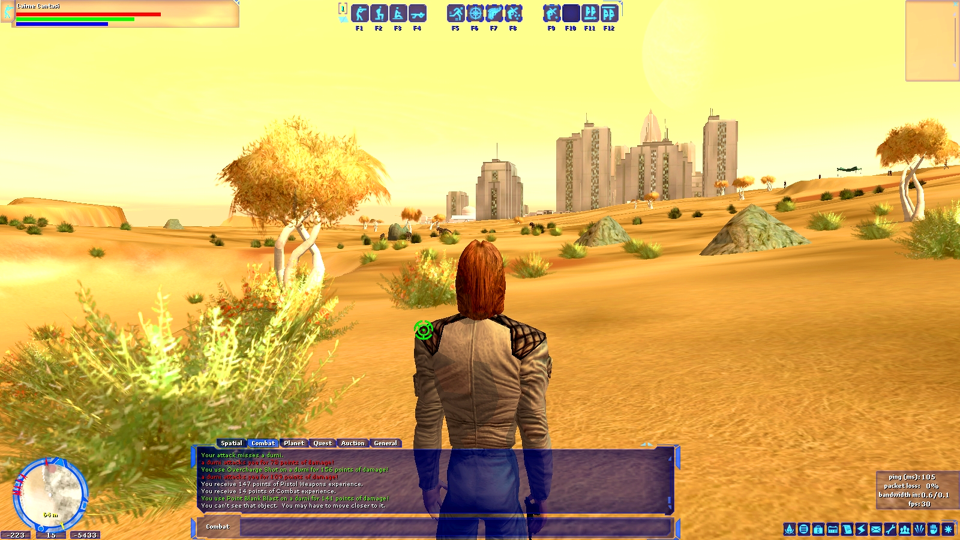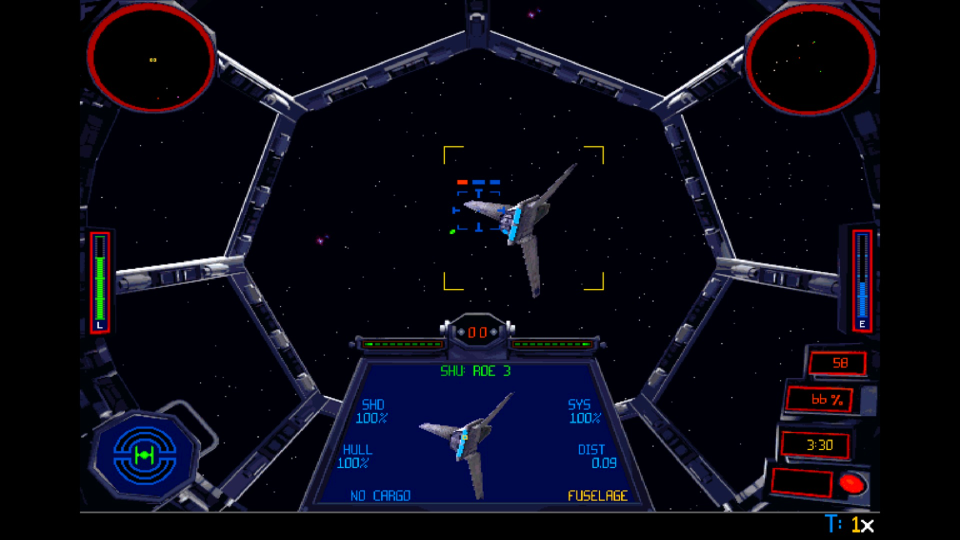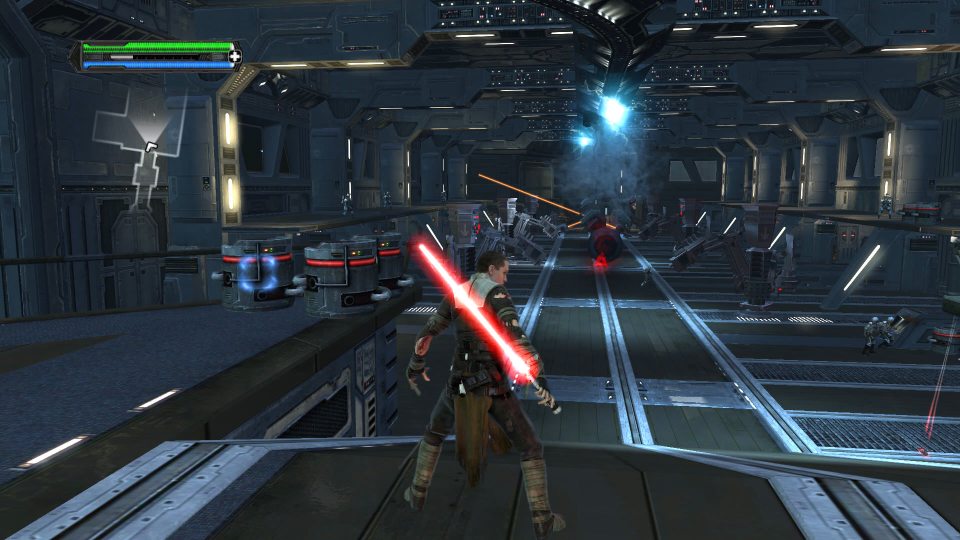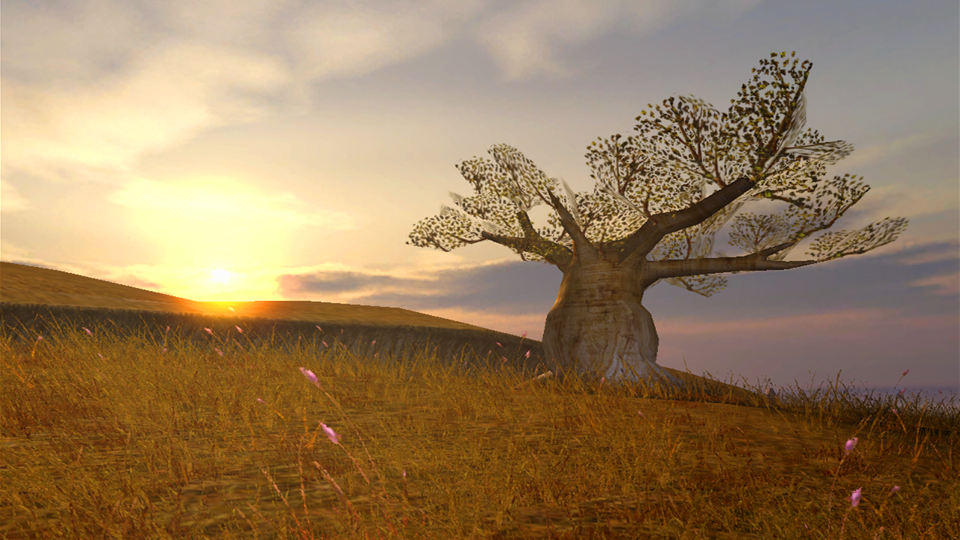Ranking the All-Time Best ‘Star Wars’ Video Games

On April 13, at Star Wars Celebration in Chicago, Respawn Entertainment debuted an inspired story trailer for “Jedi: Fallen Order,” the first major single-player “Star Wars” game in almost nine years. While players absorbed new details about the project during the panel, speculation online and elsewhere centered on the triumphs of the past. In the spirit of this, Variety decided to count down our picks for the 10 best “Star Wars” video games of all time. Here’s what we came up with.

Related stories
Lucasfilm Considering 'Knights of the Old Republic' Project
How Oculus's 'Vader Immortal' Puts You Into the Star Wars Universe
10. “Star Wars Galaxies” (2003)
Although “Star Wars Galaxies” was shut down in 2011 to make way for “The Old Republic,” Sony Online Entertainment’s massively multiplayer online game is a project that’ll be long remembered for its monumental scope and ambition. With people like “Ultima Online” lead designer Raph Koster and LucasArts visionary Haden Blackman at the helm, the MMO was a bold, novel use of the license that predated “World of Warcraft” by a year. Offering role-players a vast, open sandbox in which to live out their “Star Wars” fantasies, “Galaxies” seems, in retrospect, like a kind of virtual predecessor to the Galaxy’s Edge theme parks opening later this year. Players who wanted to tour the worlds of the galaxy far, far away could do so in the realm of cyberspace — an experience many will treasure forever.
9. “Revenge of the Sith” (2005)
Perhaps the most controversial choice on this list, the Collective’s 2005 “Revenge of the Sith” adaptation certainly had its flaws. But it stands as one of the most memorable and inventive attempts to turn a “Star Wars” film, wholesale, into a video game. Underappreciated then and now, it was a loving tribute to George Lucas’s final turn as director of the saga he began decades prior. It boasted thrilling sequences based on scenes cut from the movie; it gave fans a solid one-on-one dueling mode with some of the best lightsaber combat in a game to date; and it even featured a fun alternate ending that hinted at what Anakin Skywalker might have become, had he not burned in that river of flame on Mustafar.
8. “Knights of the Old Republic II” (2004)
A rushed production timeline and a missing third-act resolution couldn’t keep this flawed sequel from becoming one of the most significant stories ever told in the “Star Wars” universe. Expanding on the D&D-style foundation established by BioWare’s award-winning original, “Knights of the Old Republic II: The Sith Lords” traded cinematic spectacle for novelistic depth and pacing. Thanks to some of the best-written dialogue in the “Star Wars” Legends continuity, “KotOR II’s” characters remain some of the most enduring non-canon creations (and voice-over performances) in the entire saga. What the development team managed to accomplish in about 14 months is made all the more impressive when you consider that it was the first game Obsidian ever released.

7. “TIE Fighter” (1994)
The first sequel to Totally Games’ acclaimed “X-Wing” is remarkable in any number of ways. It casts players in the role of a rank-and-file star pilot working for the Galactic Empire, swapping out the typical hero character for one of the bad guys — from a certain point of view. A full-fledged spaceflight sim with a complex symphony of controls to manage, it’s a far cry from simple arcade shooters like the original “Rogue Squadron.” When it launched in 1994, it was a vital example of rich narrative design, weaving together elements of the classic film trilogy, Legends-era lore, and the fan-favorite character Grand Admiral Thrawn, first introduced in Timothy Zahn’s beloved novel “Heir to the Empire.”
6. “Episode I: Racer” (1999)
Like 2001’s “Starfighter” and 2002’s “Bounty Hunter,” “Episode I: Racer” succeeded by taking one facet of the “Star Wars” prequel trilogy and elaborating on it in a way that felt both faithful to the source material and well suited for a video game, regardless of the brand behind it. No matter what you thought of “The Phantom Menace,” podracing was a fascinating, original concept, and the game did it justice. Most licensed titles from the N64 era haven’t held up as well as “GoldenEye”; “Racer” is one exception.
5. “Battlefront II” (2005)
The third and final “Star Wars” title by Pandemic Studios felt like a technical game changer, showcasing a seamless blend of space combat and infantry engagements. It also offered up an impressive complement of lightsaber-wielding hero characters — a feature seen in 2002’s “The Clone Wars” but absent in the original 2004 “Battlefront.” The sequel’s campaign mode follows the fan-borne 501st Legion, a clone-trooper unit known as Vader’s First after the end of the Clone Wars. Their story begins with the Republic Army’s first battle, on Geonosis, and recounts the eventual fall of the Jedi Order and subsequent birth of the Empire. Nearly a decade and a half after its release, “Battlefront II’s” still among the very best multiplayer-driven “Star Wars” experiences.

4. “The Force Unleashed” (2008)
Starring Darth Maul voice actor Sam Witwer, this anything-goes, hack-and-slash action game lets players inhabit a powerful Force user codenamed Starkiller — Darth Vader’s secret apprentice in the Legends timeline. Under Vader’s guidance, he hunts down and dispatches several of the last remaining Jedi before he’s ultimately betrayed by his Sith master. Given a second chance at life in a galaxy under the Emperor’s thumb, Starkiller turns to the fledgling Rebellion, led by the likes of Bail and Leia Organa. To this day, “The Force Unleashed” remains a rich Jedi power fantasy as well as an engaging story of redemption. Not to mention its well-staged boss battles, some of which are seemingly timeless.
3. “Star Wars” (1983)
Atari’s “Star Wars” is one of the all-time great arcade cabinets, right up there with golden-age classics like “BurgerTime,” “Dig Dug,” and “Ms. Pac-Man.” Released in 1983 to coincide with the theatrical run of “Return of the Jedi,” the “Star Wars” arcade game was simply groundbreaking. To a modern audience, its colorful visuals resemble the skeletal latticework of the Grid, the setting of the original “Tron” film, but it makes for a phenomenal rail shooter. With its early use of voice-over clips, 3D vector graphics, and tasteful repurposing of John Williams’s iconic score, the ’83 “Star Wars” cabinet recreated the Battle of Yavin with stunning fidelity.
2. “Jedi Knight II: Jedi Outcast” (2002)
The third and strongest installment in the “Jedi Knight” tetralogy, “Jedi Outcast” evolved the winning formula of its predecessors — “Dark Forces” as well as unrelated stories like “Shadows of the Empire” — to deliver a physics-based Jedi playground infused with classic first-person-shooter design. The game’s titular hero, the roguish Kyle Katarn, has gone down in history as one of the essential “Star Wars” Legends characters. “Jedi Outcast” is the culmination of Katarn’s story.

1. “Knights of the Old Republic” (2003)
BioWare’s grand vision for the Old Republic, at a time when Jedi and Sith were legion, proved to be fertile ground for “Star Wars” tabletop and video games alike. The character of Darth Revan, in particular, presented a bold, 21st-century twist on the archetypal hero’s journey, one that continues to resonate with players today. The original “KotOR” became a watershed moment for both the “Baldur’s Gate” developer and Western role-playing games at large, setting a new precedent for high production values and full voice-over. This transition can be seen in the contrast between something like 2002’s “Morrowind” and 2007’s “Mass Effect.” “Knights of the Old Republic” is often remembered for being one of the best works of “Star Wars” storytelling beyond the films, but it’s also a great RPG — in any universe.
Sign up for Variety’s Newsletter. For the latest news, follow us on Facebook, Twitter, and Instagram.

